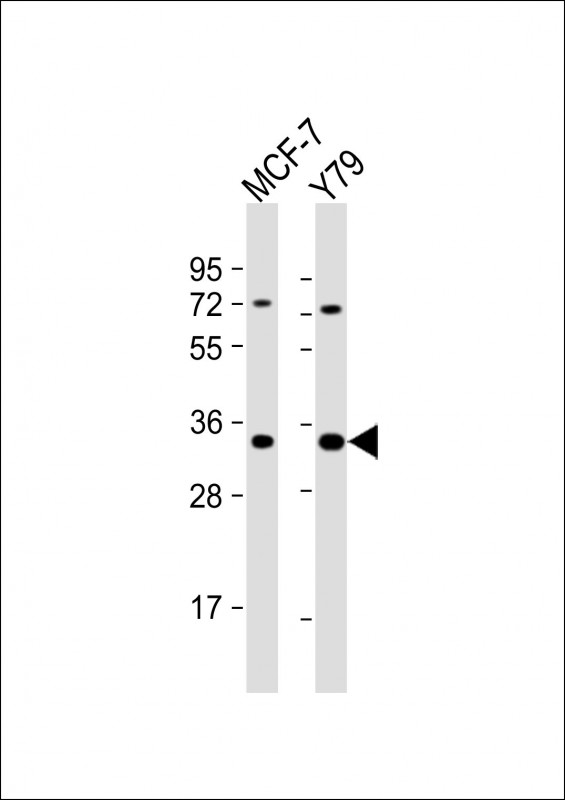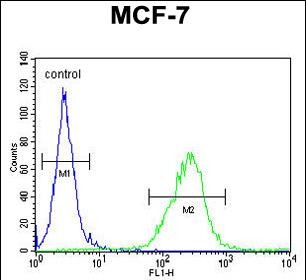Rabbit Polyclonal Antibody to OR6C4
货号:
P34247
别名:
Olfactory receptor 6C4, Olfactory receptor OR12-10, OR6C4
应用:
WB,FCM
反应种属:
Human
抗体类型:
Primary antibody
Swissprot:
Q8NGE1
规格:
目录价
在线咨询
Description |
|---|
Olfactory receptors interact with odorant molecules in the nose, to initiate a neuronal response that triggers the perception of a smell. The olfactory receptor proteins are members of a large family of G-protein-coupled receptors (GPCR) arising from single coding-exon genes. Olfactory receptors share a 7-transmembrane domain structure with many neurotransmitter and hormone receptors and are responsible for the recognition and G protein-mediated transduction of odorant signals. The olfactory receptor gene family is the largest in the genome. The nomenclature assigned to the olfactory receptor genes and proteins for this organism is independent of other organisms. |
Specification |
|
|---|---|
| Aliases | Olfactory receptor 6C4, Olfactory receptor OR12-10, OR6C4 |
| Entrez GeneID | 341418 |
| Swissprot | Q8NGE1 |
| WB Predicted band size | 35.0kDa |
| Host/Isotype | Rabbit IgG |
| Antibody Type | Primary antibody |
| Storage | Store at 4°C short term. Aliquot and store at -20°C long term. Avoid freeze/thaw cycles. |
| Species Reactivity | Human |
| Immunogen | This OR6C4 antibody is generated from rabbits immunized with a KLH conjugated synthetic peptide between 242-270 amino acids from the C-terminal region of human OR6C4. |
| Formulation | Purified antibody in PBS with 0.05% sodium azide. |
Application |
|
|---|---|
| WB | 1/1000 |
| FCM | 1/10-1/50 |
Product Image
-
All lanes : Anti-OR6C4 Antibody (C-term) at 1:1000 dilution Lane 1: MCF-7 whole cell lysate Lane 2: Y79 whole cell lysate Lysates/proteins at 20 µg per lane. Secondary Goat Anti-Rabbit IgG, (H+L), Peroxidase conjugated at 1/10000 dilution. Predicted band size : 35 kDa Blocking/Dilution buffer: 5% NFDM/TBST.

-
OR6C4 Antibody (C-term) (Cat. #P34247) flow cytometric analysis of MCF-7 cells (right histogram) compared to a negative control cell (left histogram).FITC-conjugated goat-anti-rabbit secondary antibodies were used for the analysis.






 鄂公网安备42018502007531号
鄂公网安备42018502007531号

